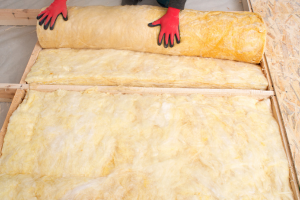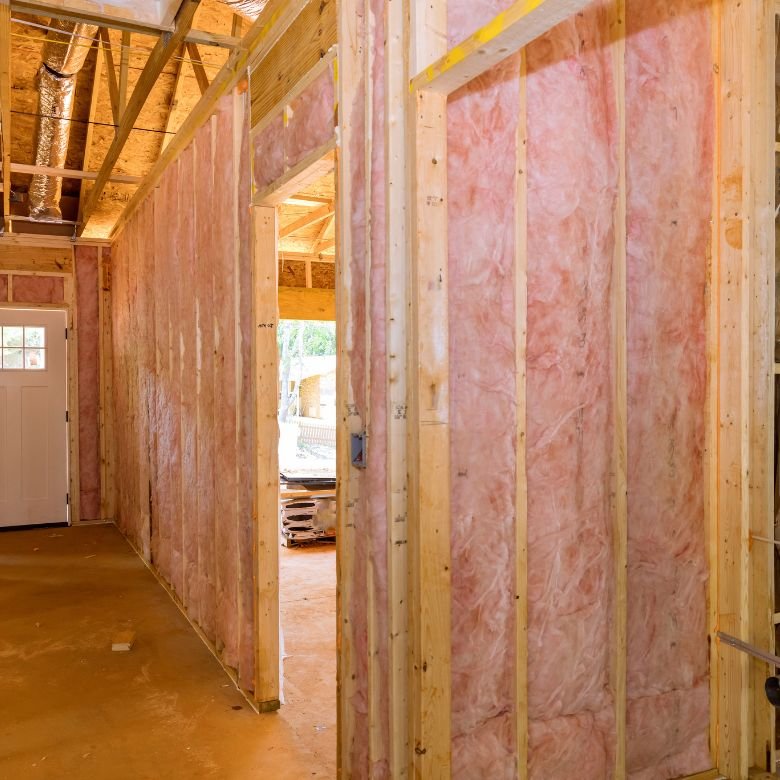One of the most important aspects of construction is the provision of high-quality acoustic and thermal insulation. Due to its impact on the everyday comfort of residents and employees in individual buildings, it should be taken into account in every case, in all rooms. Today, we will give you some tips on how to do this.

What is the purpose of acoustic insulation?
Acoustic insulation involves limiting the transmission of sounds into the interior of the building and between individual rooms. This can be increased by adding insulation layers to basic structural elements such as walls, floors and roofs. It is also extremely important to secure and seal windows and doors.
We can decide to use various materials for acoustic insulation at any time (there are many ways to soundproof rooms that serve as, e.g., a recording studio). However, the sooner we start planning, the better. Acoustic insulation of walls and ceilings, implemented already at the construction stage, is highly effective and durable. Thanks to the use of appropriate materials, we can, e.g.:
- increase daily indoor comfort (noise reduction affects, e.g., the level of our concentration and sleep quality),
- improve employee performance by ensuring good conditions for them,
- influence the building’s thermal insulation, which most often goes hand in hand with an appropriate level of acoustic insulation.
INTERESTING FACT! Get to know the most important thermal insulation materials in construction. How to insulate the roof, walls and foundations?
Reducing the transmission of individual sounds is extremely important in residential buildings as well as office buildings and workplaces. By using thermal and acoustic insulation materials, we can protect ourselves against annoying noise coming from both outside (e.g. traffic) and inside (e.g. loud music). Protection against sounds resulting from the operation of individual devices will improve the comfort of work and the efficiency of the team.
Types of acoustic insulation
Acoustic insulation can be divided into several groups. The standard classification includes:
- insulating materials that protect us from airborne sounds (such as conversations, music and wind),
- insulating materials that provide a barrier against impact sounds (e.g. ceiling vibrations or the sound of moving objects heard in apartment blocks and office buildings).
Acoustic insulation can also be divided based on the used materials. We are protected against airborne sounds by layered insulating materials used in construction, which is why the popular wool and polystyrene foam are most often sold in the form of boards of different thicknesses. However, that’s not all there is to know.
Read also about PIR thermal insulation panels.
Acoustic insulation – which material to choose?
Here are the best and most popular options.
1. Polyurethane
It is a plastic material used, e.g., in the production of popular insulation foams and fibres. Its advantages are ease of processing, resistance to damage and versatility. Polyurethane is used in the production of sealing foams, coatings, sponges, seats and other everyday items, as well as acoustic insulation components. In the construction industry, it is mostly used in the form of PUR foams/spray insulation, which are characterised by:
- rapid application,
- high level of sound and heat insulation,
- durability.
Spray insulation from the renowned Crossin brand is very popular among the wide range of products of the PCC Group. Innovative spray technology makes it possible to obtain an efficient and stable material used for acoustic insulation of roofs.
2. Mineral wool
The boards made of mineral wool are characterised by various dimensions and thickness. In some cases, wool granules are also used. The advantages of that material are fire resistance and durability. The high sound absorption coefficient makes wool an excellent soundproofing material.
3. Polystyrene foam
Sound insulation – polystyrene foam or wool? It’s a popular question, but it is also worth being aware that there is no definite answer. It all depends on individual needs and the area we want to insulate. Polystyrene foam, i.e. processed polystyrene, is most often used to insulate external walls. Read more about insulating buildings with polystyrene foam.
If you are looking for long-lasting and efficient acoustic and thermal insulation for your roof, check out the Crossin (e.g. Crossin Hard 50 system) and Ekoprodur (e.g. Ekoprodur S11E-MAX polyurethane system) products available in the offer of the PCC Group.

What is soundproofing of lightweight partition walls?
Soundproofing lightweight partition walls involves filling the structure with spray foam or mineral wool. The thickness of the material or the number of its layers depend primarily on the type of building (e.g. more layers are used in office buildings than in the case of a single-family house).
The purpose:
- additional protection against noise,
- increased sense of privacy and comfort of life,
- increase in the value of the building on the real estate market.
Acoustic insulation made of PUR foam, which is used for soundproofing, is easy to install. It is often used in recording studios. The main advantage of wool is its resistance to factors such as moisture, which makes it perfect for bathrooms.
IMPORTANT! It is worth remembering that an adequate level of noise reduction can only be achieved if we take a holistic approach to the entire construction process. Acoustic insulation will deteriorate if we do not take care of the sound insulation of doors and windows.
What will floor acoustic insulation protect you against?
The materials for acoustic insulation of the floor protect us primarily against impact sounds. Customers looking for the best acoustic insulation for panels and other soundproofing methods can choose from several types of polyurethane foams. Soundproofing the floor will help eliminate the following sounds:
- loud footsteps of neighbours,
- sounds of furniture moving,
- creaking parquet floors.
Polyurethane foams (read about the ingredients for PUR foams) can be easily used under panels and carpets to create an additional insulating layer. There are also advocates of so-called floating floors. In this case, a mineral wool slab or polystyrene foam can act as the soundproofing layer.
How to increase the level of acoustic insulation of windows?
The materials necessary for acoustic insulation are provided by the construction industry – the spray thermal and acoustic insulation offered by the PCC Group are selected by the best professionals. Remember; however, that the acoustic insulation of windows is greatly influenced by the glazing. Its thickness translates into the level of noise reduction. The tightness, stability, shape and dimensions of your windows are also important. Therefore, always approach construction and renovation holistically, paying attention to all elements.
The ability of windows to reduce sounds from the environment is determined primarily by the RW coefficient (acoustic insulation coefficient), expressed in decibels. The higher its value, the better the level of acoustic insulation. It is therefore worth choosing high-quality glass and using additional acoustic insulation in the form of durable building materials. You will find them in the offer of the PCC Group, trusted by the best specialists!
- https://www.nature.com/articles/114085b0
- https://www.rockwool.com/group/products-and-applications/acoustic-insulation/
- https://budujemydom.pl/budowlane-abc/budowa-krok-po-kroku/a/25772-budowa-dobrze-zaizolowanego-akustycznie-domu
- Miernictwo akustyczne”, WNT Warszawa 1987, rozdz. 6 („Pomiary właściwości materiałów akustycznych i izolacyjności akustycznej”
